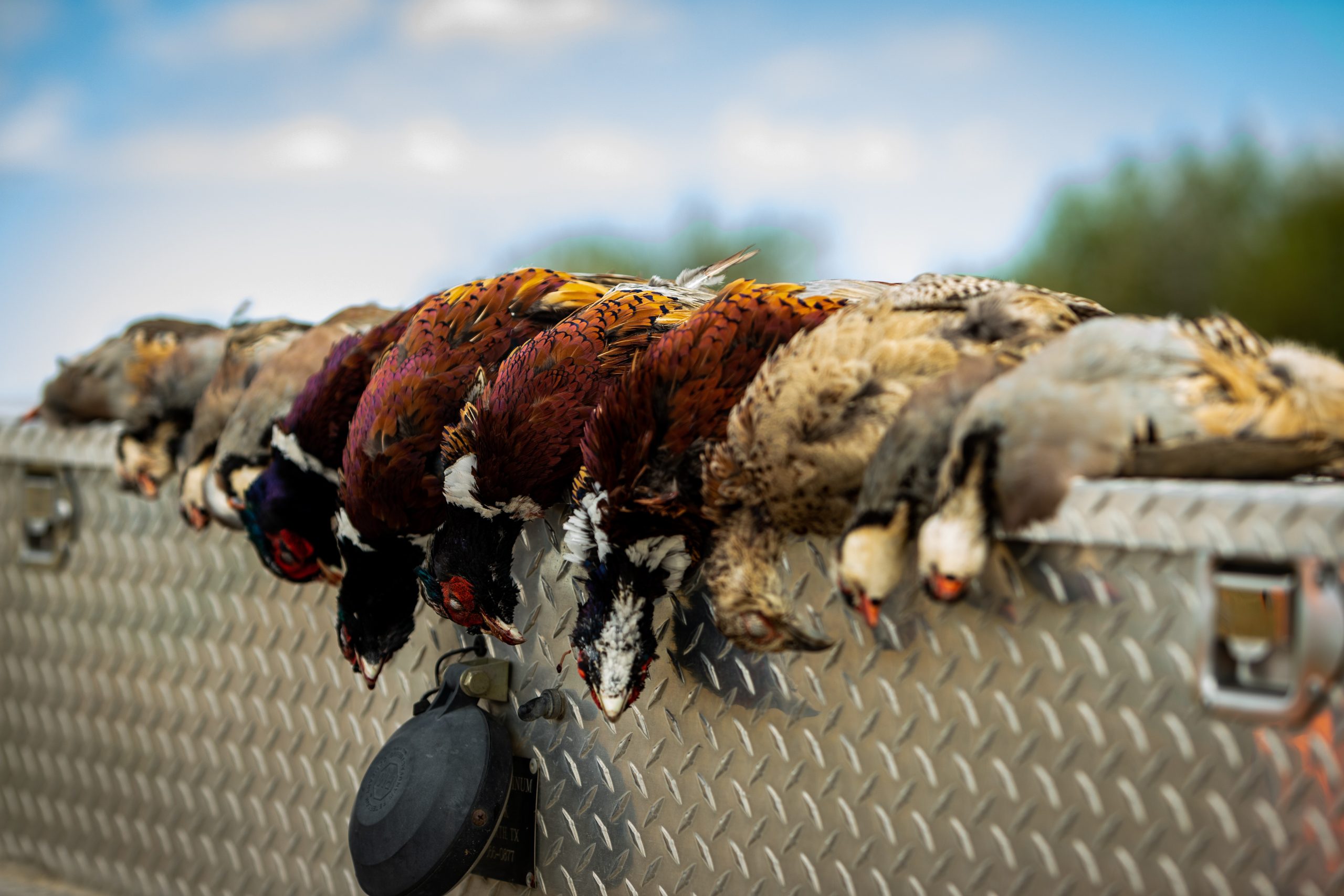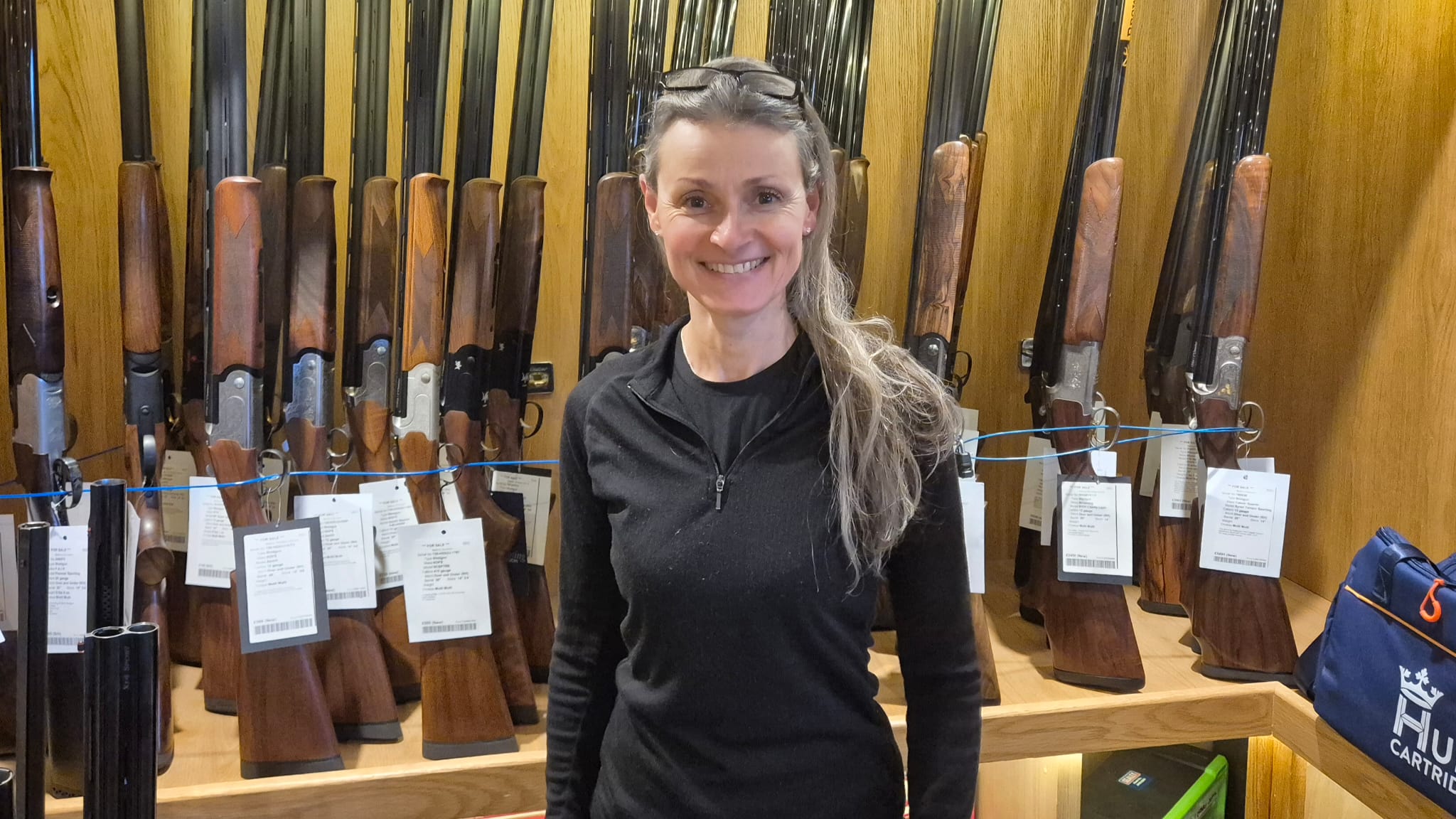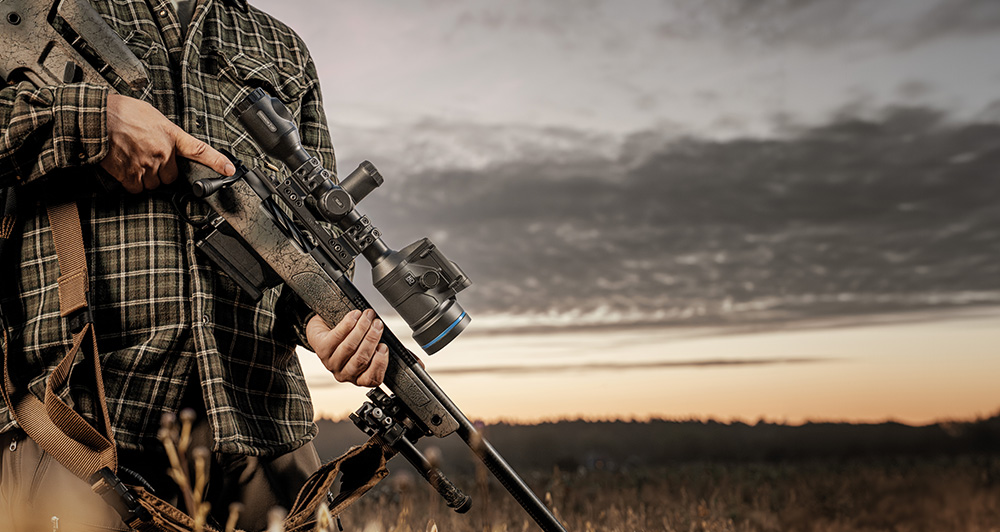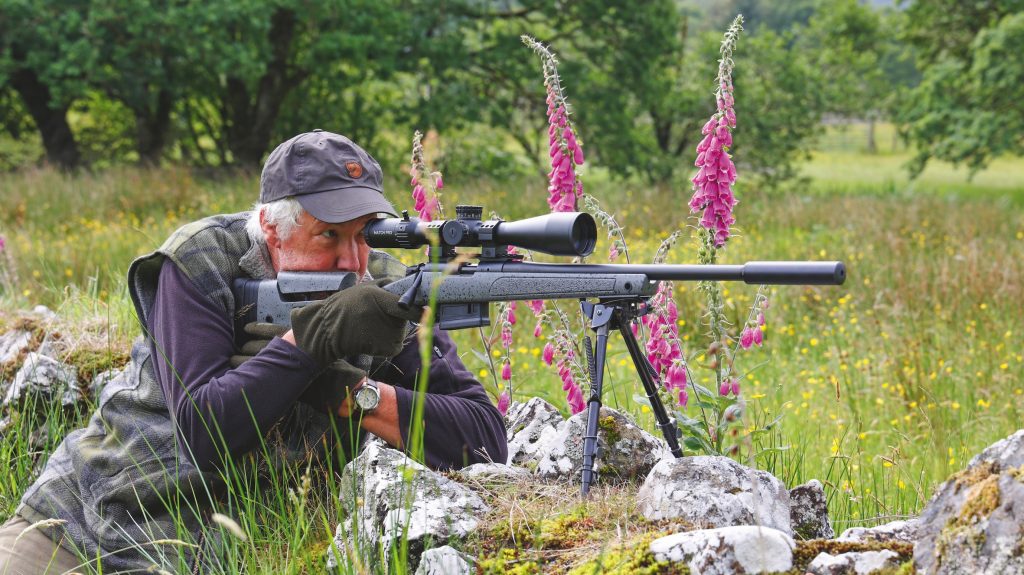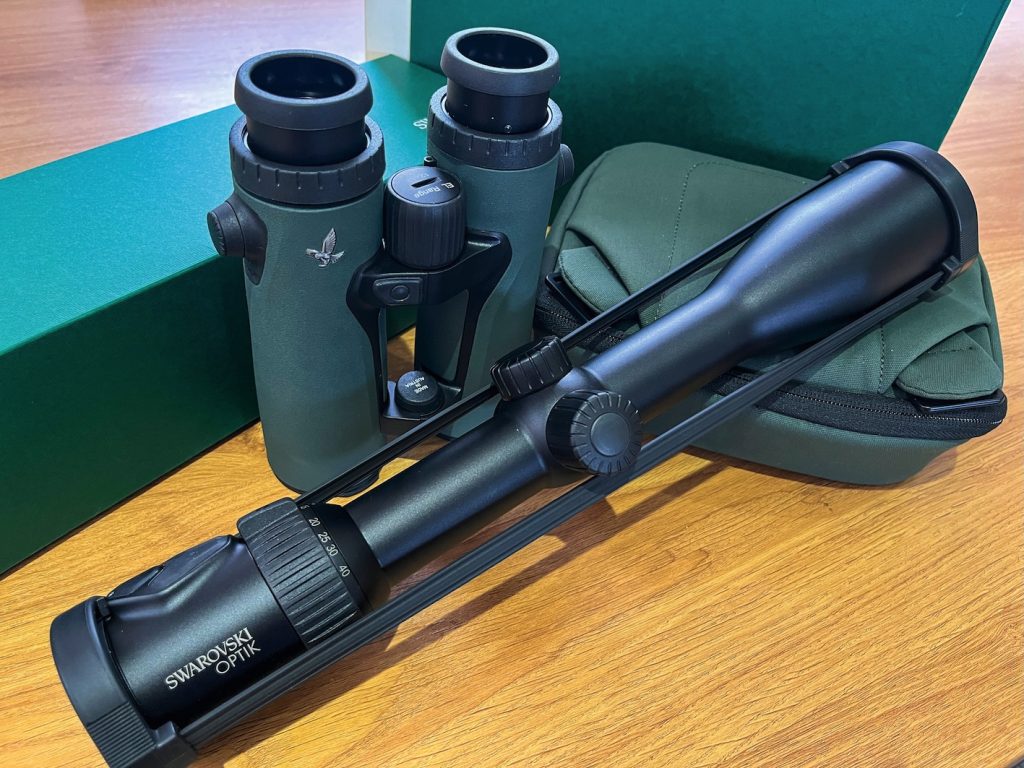A Practical Guide to Thermal Spotters in the UK
A clear, expert-led guide to choosing and using thermal spotters for legal, effective night shooting, fox control, and deerstalking in the UK.

Ask any seasoned fox‑controller or deerstalker what single piece of gear has changed night shooting the most in the last decade and most will answer “a handheld thermal.” The ability to see heat – not light – has tipped the odds back in the shooter’s favour, whether that’s finding a wary Charlie on a lambing field or recovering a late‑evening roe buck in deep cover.
Yet many readers still wonder which spec matters, how to stay legal and how to integrate a thermal spotter into existing fieldcraft. That’s what this guide tackles. We’ll decode the jargon, suggest realistic budgets, and share hard‑won tips from night‑time pest controllers – all in short, digestible paragraphs.
1. What a Thermal Spotter Actually Does
Conventional night‑vision amplifies what little light is available. Thermal, by contrast, uses an uncooled micro‑bolometer sensor to detect the infrared energy every warm object emits. The sensor’s pixels convert those temperature differences into a visible image.
Practical upshot?
- Animal bodies “glow” against a cooler background regardless of camouflage, colour or ambient light.
- A mature fox at 250 m that’s invisible to the naked eye shows up as an unmistakable bright shape.
- Light discipline ceases to be an issue – no lamp beam to spook quarry or advertise your position.
2. UK Legalities in One Minute
Thermal spotters (handheld or helmet‑mounted) are legal for observation throughout Britain. Using thermal riflescopes or clip‑ons to shoot live quarry is also lawful for pest species (fox, rabbit, rat, grey squirrel), but deer are tightly regulated: England & Wales allow night shooting for certain species under specific authorisations; Scotland bans it. Always check current Wildlife & Countryside Act exemptions and local Firearms Licensing conditions.
Two golden rules:
-
- Identify beyond doubt. Thermal shows heat, not detail, so confirm species before pulling the trigger – often by switching to a white light or digital NV riflescope.
- Mind neighbours. A spotter will reveal livestock, dog‑walkers or ramblers you’d never otherwise notice at night – a major safety win.
3. Key Specifications Decoded
Comparison Table
Sensor resolution (e.g. 384 × 288 or 640 × 480)
Number of heat‑sensing pixels
Higher counts give a sharper image and let you zoom digitally without everything turning blocky.
Pixel pitch (12 µm vs 17 µm)
Size of each pixel
Smaller pitch squeezes more pixels into a compact body, helpful for pocket‑sized spotters.
NETD (≤ 40 mK is good)
How small a heat difference the sensor can discern
Lower NETD keeps the picture clear on damp, misty nights when everything’s almost the same temperature.
Lens diameter and base magnification follow the same logic as optics generally:
* big lens = better light‑gathering and long‑range detail, but heavier and narrower field of view.* Think about your ground. On an open hillside a 50 mm lens shines; in tight woodland a 19 mm sees more of the scene.
4. Handheld, Clip‑On or Full Thermal Scope?
- Handheld spotter – fastest way to scan 360° without pointing a rifle at anything. Keeps weight off the gun and is legal everywhere.
- Clip‑on front attachment – converts a daytime optic to thermal; maintains existing zero but adds bulk and cost.
- Dedicated thermal scope – all‑in‑one aiming solution for those who shoot almost exclusively at night.
For most people starting out, a handheld monocular is still the versatile, affordable first step – you’ll use it for safety reconnaissance even on daytime stalks.
5. Budget Ranges with Real‑World Examples
Thermal prices have fallen, but image quality still tracks cost closely. Below is a realistic 2025 snapshot of prices and specifications.
Comparison Table
£400
256 × 192 sensor, 12 μm pixels, NETD ≈ 35–<40 mK, detection 700 m
Pixfra Mile 2 M207 – pocket‑size, ideal starter unit.
£1000
384 × 288 sensor, 17 μm, NETD < 35 mK, LRF optional
lsar Axion XQ30 Pro – compact yet adds video recording and stadiametric range‑finder.
£2200
640 × 480 sensor, sub‑25 mK NETD, built‑in laser range‑finder & ballistic apps
Pulsar Oryx LRF XG35 – flagship class for professional vermin controllers.
If those figures feel steep, remember a decent thermal still costs less than a mid‑range stalking rifle and scope – and you’ll probably use it more often.
6. Fieldcraft: Making Thermal Work Harder
Scan first, stalk second. Switch the screen on only when you need to check a field; otherwise keep it in standby to preserve battery and night vision. Every second saved by a fast start‑up makes the difference between taking or losing the shot.
Use two hands. Resting the monocular on sticks or a gate steadies the view for fine identification. Thermal monoculars magnify shakes far more than binoculars do.
Pair with a range‑finder. Laser‑equipped spotters (or separate RF binoculars) confirm whether the heat blob is inside your ethical range before you set up.
Mind background clutter. Wet leaves or galvanised troughs can hold heat and throw false positives. Pan slowly to pick out genuine moving animal signatures.
7. Integrating Thermal with the Rest of Your Kit
- Ear protection still matters. Thermal encourages silent ambush shooting where the only loud event is the shot itself – but that single shotgun blast can hit 150 dB and cause instant hearing loss. We recommend a good pair of electronic ear defenders that maintain or even enhance your situational awareness whilst mitigating hearing damage.
- Dedicated pocket or pouch. A spotter lives in the hand more than binoculars; stow it in the cargo pocket of your range bag or on a chest harness for rapid deployment.
- Glove choice. Heat‑sensing devices reveal just how much warmth bare fingers leak. Lightweight shooting gloves dull that signature and improve grip on the monocular in drizzle.
- Battery strategy. Cold nights sap batteries; keep spares inside an inner jacket pocket so they start warm.
8. Maintenance and Lifespan
- Lens care: Germanium objective lenses scratch easily. Clean only with an air blower and lens pen – avoid the shirt‑tail wipe.
- Condensation: Entering a warm vehicle will fog internal optics. Put the unit in a dry‑bag until temperature equalises.
- Firmware updates: Manufacturers add colour palettes, Wi‑Fi stability and improved algorithms. Update at home, not in the field.
- Storage: Remove batteries if the unit will sit for months; lithium cells can leak or discharge unnoticed.
Look after a thermal and it will last a decade – long enough for resale when the next sensor breakthrough drops.
9. Beyond Foxes – Other Uses
- Deer Welfare: Spotting wounded animals after a driven day.
- Duck Retrieval: Picking up teal on marshes after sunset – a warm body glows on the mud.
- Border Security & Farm Safety: Identifying poachers or escaped stock without revealing your position.
Training Gundogs: In cover crop trials handlers use thermal to mark fallen birds and direct dogs more efficiently.

